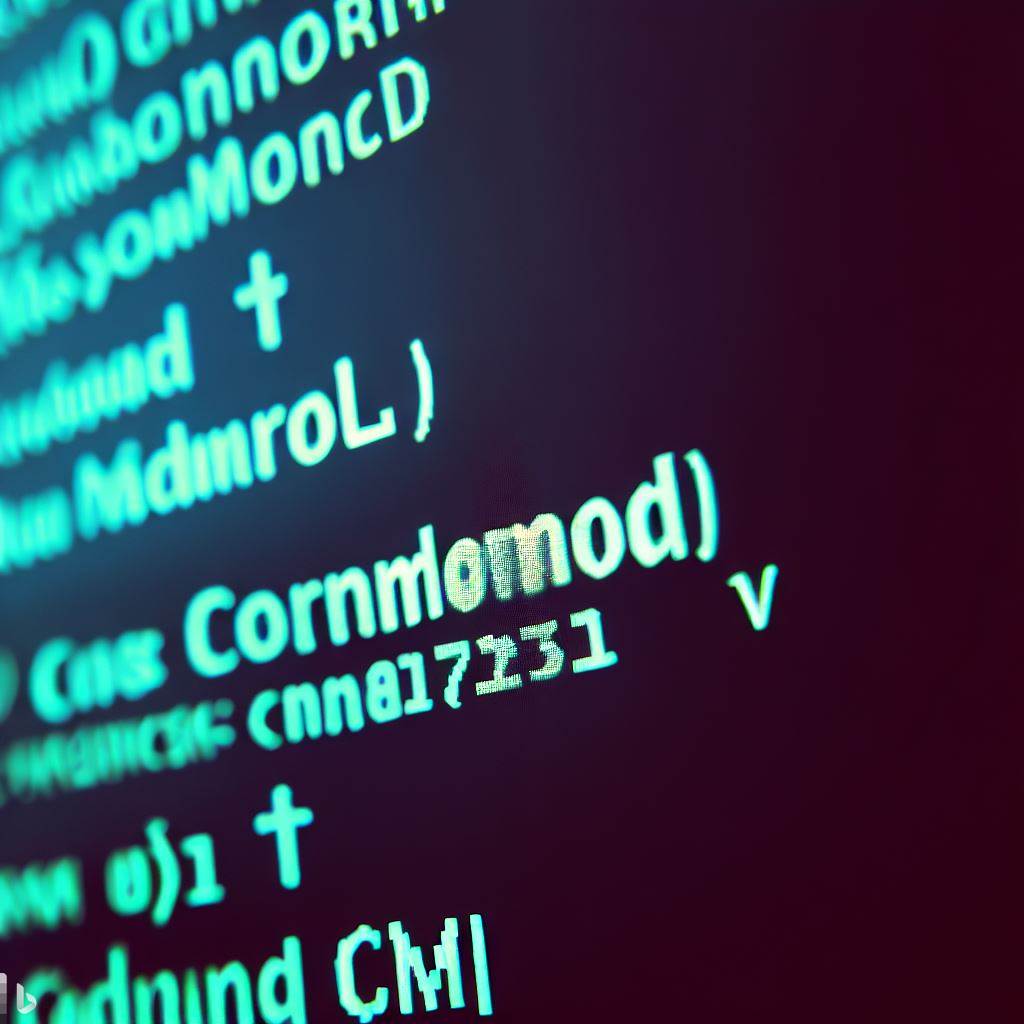How Tech Windows Commands

Introduction to Tech Windows Commands
Tech Windows commands, also known as command prompt commands or CMD commands, are a set of instructions that can be execut in the Windows command prompt. The command prompt is a text-based interface in Windows that allows users to interact with the operating system through commands. These commands can be used to perform various tasks, such as managing files and folders, troubleshooting PC issues, customizing Windows settings, and automating tasks.
Learning tech Windows commands is important for several reasons. First, it allows users to have more control over their Windows operating system. By using commands, users can perform tasks more efficiently and quickly than using graphical user interfaces (GUIs). Second, knowing tech Windows commands can be helpful in troubleshooting PC issues. Many common problems can be resolv using command prompt commands, saving users time and frustration. Finally, learning tech Windows commands can enhance a user’s overall computer skills and make them more proficient in using Windows.
Basic Tech Windows Commands for Beginners
For beginners, it is important to start with the basic tech Windows commands. Here are some of the most commonly use basic commands and their functions:
1. cd (Change Directory): This command is use to change the current directory in the command prompt. For example, “cd C:\Users” will change the current directory to the Users folder.
2. dir (Directory): This command is use to list the files and folders in the current directory. For example, “dir” will display a list of files and folders in the current directory.
3. mkdir (Make Directory): This command is use to create a new directory. For example, “mkdir Documents” will create a new folder named Documents in the current directory.
4. copy: This command is used to copy files from one location to another. For example, “copy file.txt C:\Documents” will copy the file.txt to the Documents folder.
5. del (Delete): This command is used to delete files. For example, “del file.txt” will delete the file.txt.
To use these basic tech Windows commands, follow these steps:
1. Open the command prompt by pressing the Windows key + R, typing “cmd” in the Run dialog box, and pressing Enter.
2. Type the desired command and press Enter to execute it.
Advanced Tech Windows Commands for Power Users
For power users who want to take their command prompt skills to the next level, here are some advanced tech Windows commands and their functions:
1. ipconfig: This command is use to display the IP configuration of a computer. It can be use to troubleshoot network connectivity issues.
2. tasklist: This command is used to display a list of running processes on a computer. It can be used to identify resource-intensive processes or terminate unwanted processes.
3. netstat: This command is used to display active network connections, listening ports, and other network statistics. It can be used to troubleshoot network issues or identify suspicious network activity.
4. sfc /scannow: This command is used to scan and repair system files. It can be used to fix corrupted or missing system files.
5. chkdsk: This command is used to check the integrity of a hard disk and fix any errors. It can be used to repair disk errors and recover data from bad sectors.
To use these advanced tech Windows commands, follow these steps:
1. Open the command prompt as an administrator by right-clicking on the Start button and selecting “Command Prompt (Admin)”.
2. Type the desired command and press Enter to execute it.
How to Use Tech Windows Commands to Troubleshoot Your PC
Tech Windows commands can be a powerful tool for troubleshooting PC issues. Here are some common PC problems and the commands that can be used to resolve them:
1. Internet connectivity issues: Use the ipconfig command to check the IP configuration and the ping command to test network connectivity.
2. Slow performance: Use the tasklist command to identify resource-intensive processes and the taskkill command to terminate unwanted processes.
3. System file corruption: Use the sfc /scannow command to scan and repair system files.
4. Disk errors: Use the chkdsk command to check the integrity of a hard disk and fix any errors.
To use these commands for troubleshooting PC issues, follow these steps:
1. Open the command prompt as an administrator.
2. Type the desired command and press Enter to execute it.
Customizing Your Windows Experience with Tech Windows Commands
Tech Windows commands can also be use to customize your Windows experience. Here are some commands that can be use for customizing Windows:
1. color: This command is use to change the color of the command prompt window. For example, “color 0A” will change the background color to black and the text color to green.
2. title: This command is used to change the title of the command prompt window. For example, “title My Command Prompt” will change the title to “My Command Prompt”.
3. prompt: This command is use to change the command prompt text. For example, “prompt $P$G” will display the current path followed by a greater than sign.
4. reg: This command is use to modify the Windows registry. It can be use to change various settings and configurations in Windows.
To use these commands for customizing Windows, follow these steps:
1. Open the command prompt.
2. Type the desired command and press Enter to execute it.
Automating Tasks with Tech Windows Commands
Tech Windows commands can be use to automate repetitive tasks, saving time and increasing productivity. Here are some commands that can be use for automating tasks:
1. task scheduler: This command is use to schedule tasks to run automatically at specified times or events. It can be use to automate backups, system maintenance, and other tasks.
2. robocopy: This command is use to copy files and directories with advanc options. It can be use to create automated backup scripts or synchronize files between different locations.
3. schtasks: This command is use to create, modify, or delete scheduled tasks. It can be use to automate various tasks, such as running scripts or launching programs.
4. shutdown: This command is use to shut down or restart a computer. It can be use to schedule automatic shutdowns or restarts.
To use these commands for automating tasks, follow these steps:
1. Open the command prompt as an administrator.
2. Type the desired command and press Enter to execute it.
Tips and Tricks for Using Tech Windows Commands Effectively
Here are some tips and tricks for using tech Windows commands effectively:
1. Use the /? option: Many commands have a /? option that displays the command’s syntax and available options. Use this option to learn more about a command and its usage.
2. Use tab completion: In the command prompt, you can use the Tab key to automatically complete a command or file name. This can save time and prevent typing errors.
3. Use redirection operators: The > operator can be use to redirect the output of a command to a file, while the | operator can be use to pipe the output of one command to another command. This can be useful for saving or manipulating command output.
4. Use aliases: You can create aliases for frequently used commands using the doskey command. For example, you can create an alias for the dir command as “d” to save typing time.
Common Mistakes to Avoid When Using Tech Windows Commands
Here are some common mistakes to avoid when using tech Windows commands:
1. Running commands without understanding their purpose: Before executing a command, make sure you understand what it does and how it will affect your system. Running commands blindly can lead to unintended consequences.
2. Running commands as an administrator without need: Running commands as an administrator gives them elevated privileges and can have serious consequences if used incorrectly. Only run commands as an administrator when necessary.
3. Not backing up important files: Before running commands that modify or delete files, make sure to back up any important files to prevent data loss.
4. Not double-checking commands: Before executing a command, double-check the command syntax and options to ensure accuracy. Typos or incorrect options can lead to unexpected results.
Conclusion
Learning tech Windows commands is important for anyone who wants to have more control over their Windows operating system, troubleshoot PC issues, customize their Windows experience, and automate tasks. By mastering basic and advanced tech Windows commands, users can become more proficient in using Windows and enhance their overall computer skills. Remember to use these commands responsibly and always double-check before executing a command to avoid any unintended consequences. With practice and experience, you can become a power user of tech Windows commands and unlock the full potential of your Windows operating system.
Also read: What Does a Cybersecurity Analyst Do






